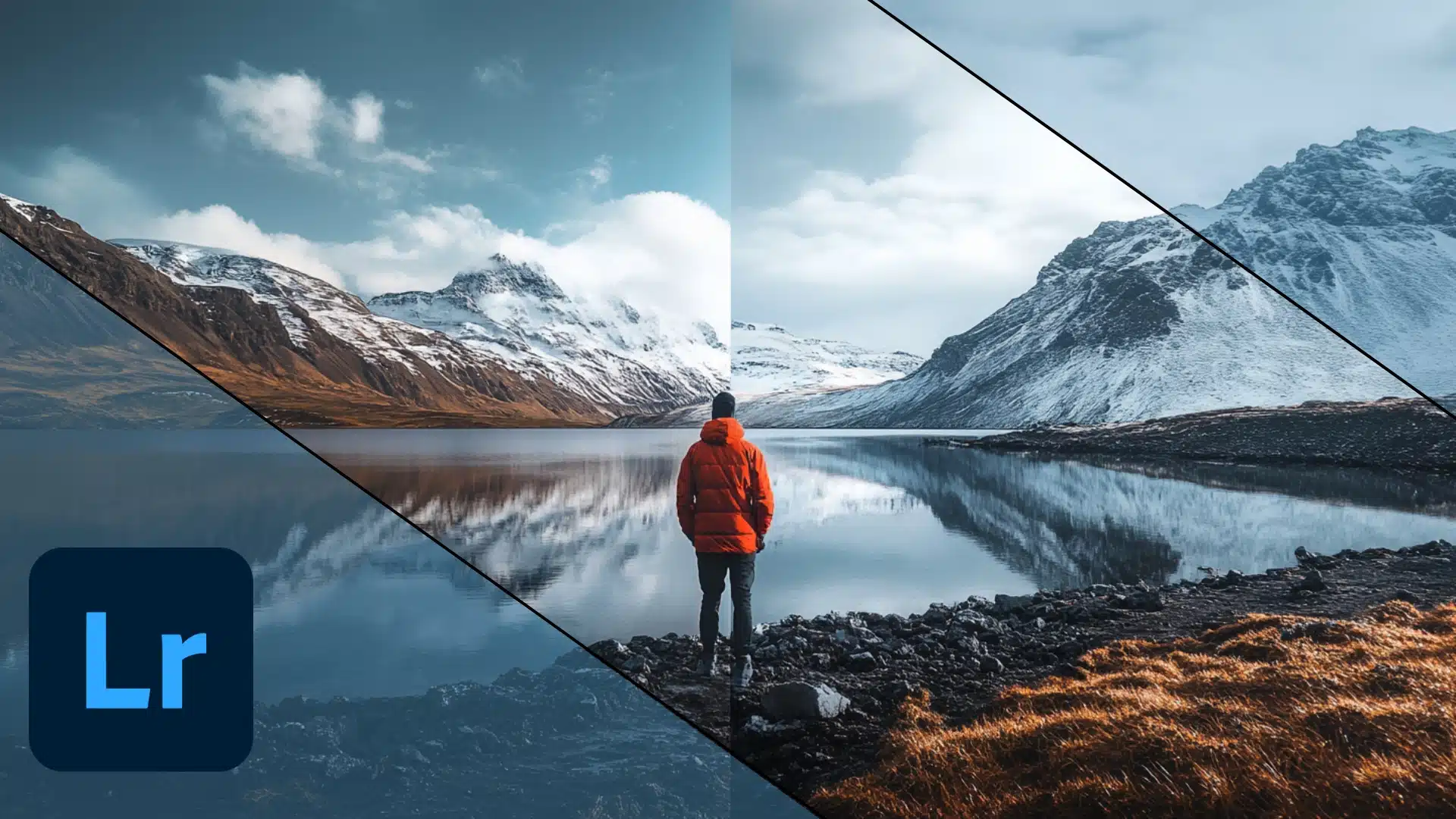
Let’s dive into Lightroom’s powerful feature and unlock the full potential for photographers.
Table of Contents
Refine Photos in Adobe Lightroom
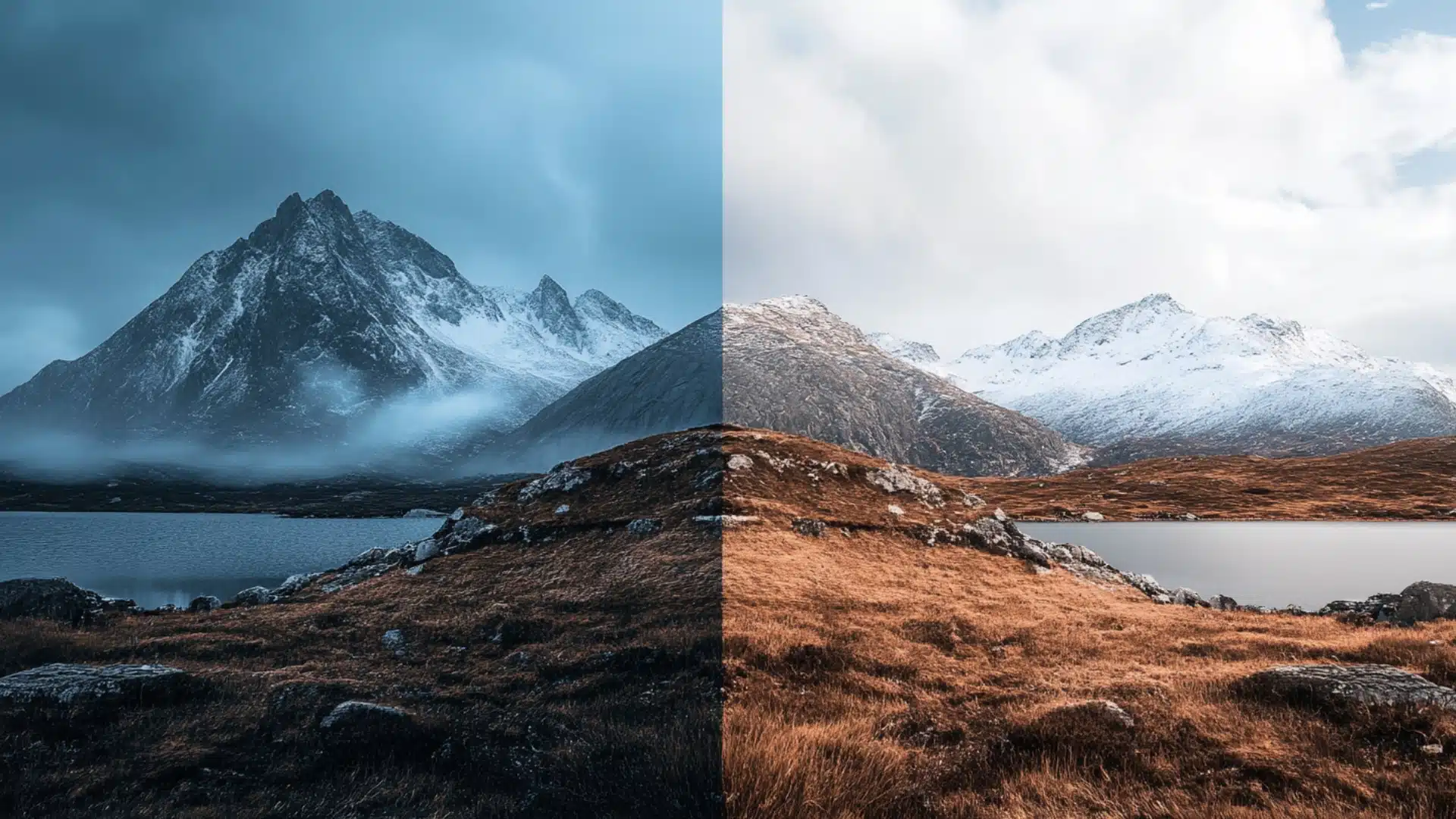
Refining your photos in Adobe Lightroom is a crucial step in the editing process that can elevate your images from good to exceptional. Whether you’re working on portraits, landscapes, or still life, Lightroom offers powerful essential tools to enhance your photos in both the Library Module and Develop Module.
Sharpening Details for Maximum Impact in Lightroom Refine Photos
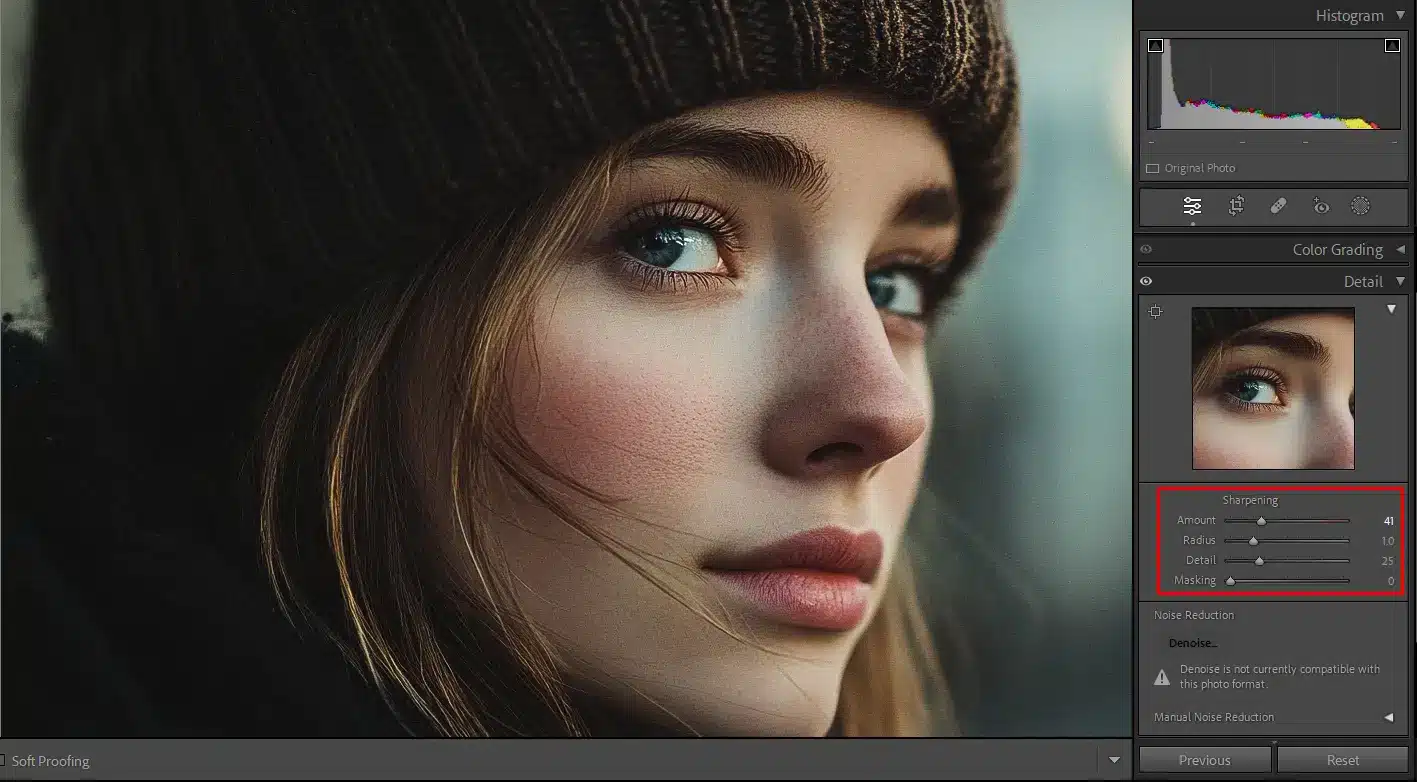
One of the most effective ways to enhance the clarity of images for photographers is through sharpening. Adobe Lightroom provides several tools that allow you to focus the sharpening effect precisely where it’s needed:
- Masking with Sharpening: This technique is particularly useful when you want to sharpen an image only the essential details in an image, such as the subject, while keeping other areas like the background unaffected. To do this, hold down the Alt/Option key while adjusting the Sharpening slider. This action will show a black-and-white mask where white areas indicate the parts being sharpened.
- Detail Slider: This slider in the Sharpening panel helps you fine-tune the sharpening effect, allowing you to control the texture and edges in your image without introducing noise. The Luminance Range auto Mask can also be applied here to ensure the sharpening effect is applied selectively based on the luminance values, preserving the natural look of your photos.
Adjusting Colors for Perfect Balance in Lightroom Refine Photos
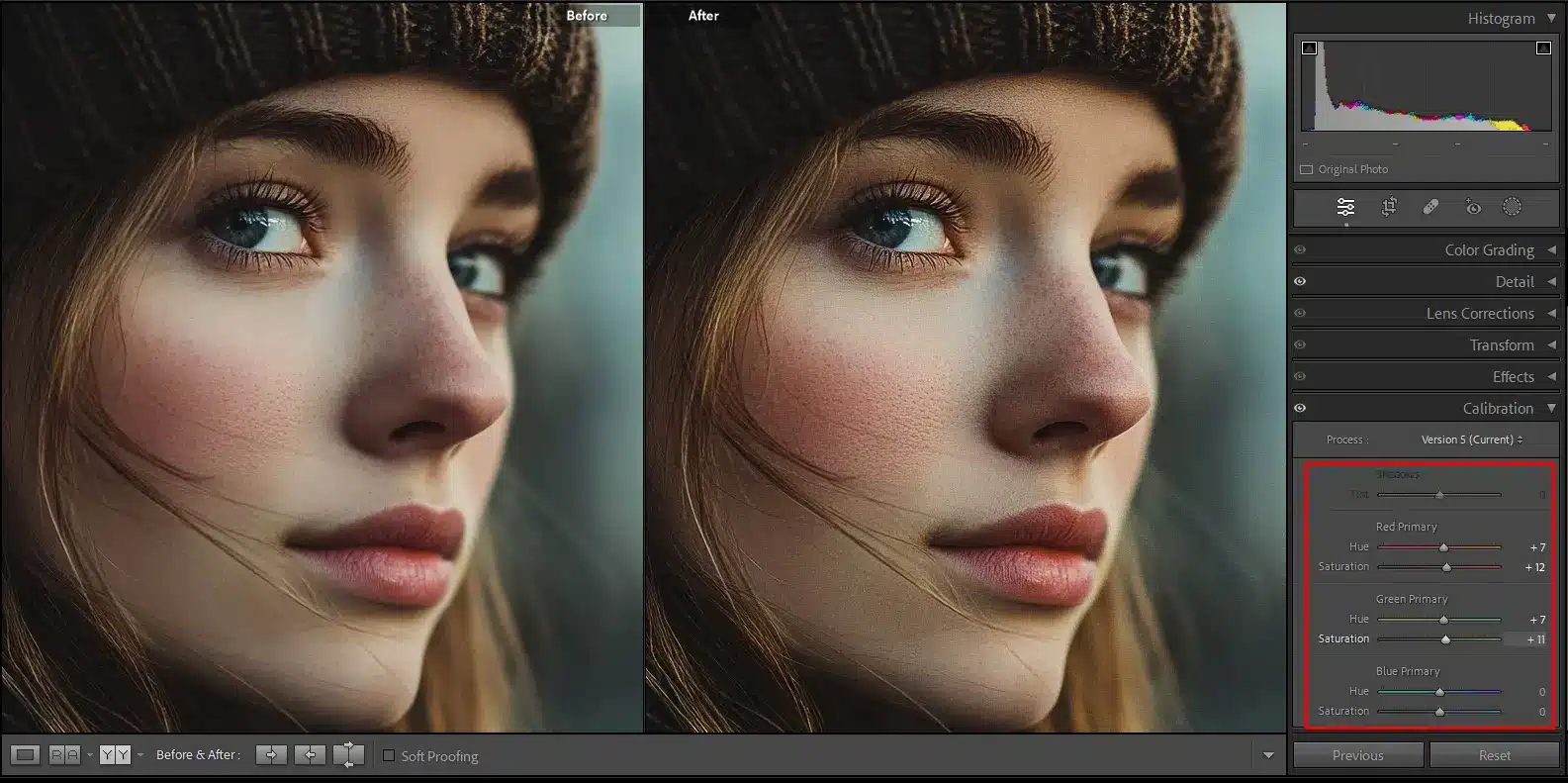
Color correction and grading can dramatically change the mood and feel of your photograph. Lightroom’s color adjustment tools provide flexibility and precision:
- Using Camera Calibration for Accurate Colors: Before you even start with basic preferences, visit the Camera Calibration panel. Change the profile from the default Adobe Standard to one that matches your camera, like Camera Portrait or Camera Landscape. This adjustment revives the colors and provides a strong foundation for further edits. For those using Adobe Camera Raw, For those using Adobe Camera Raw, similar sharpening techniques can be applied.
- HSL/Color Panel: The Hue, Saturation, and Luminance Range(HSL) panel allows you to target specific color ranges within a color image and tweak them individually. This is especially useful for correcting color casts or enhancing certain colors in your image without affecting the entire scene. Use the Luminance Range Slider to adjust the brightness of specific color ranges, which helps in fine-tuning to show Luminance map and achieving the perfect balance in your photo.
- Refine Slider: Use this to make precise local adjustments to your color corrections, ensuring that your adjustments are smooth and enhance the overall look of your photo.
Fine-Tuning Revelation for Professional Results
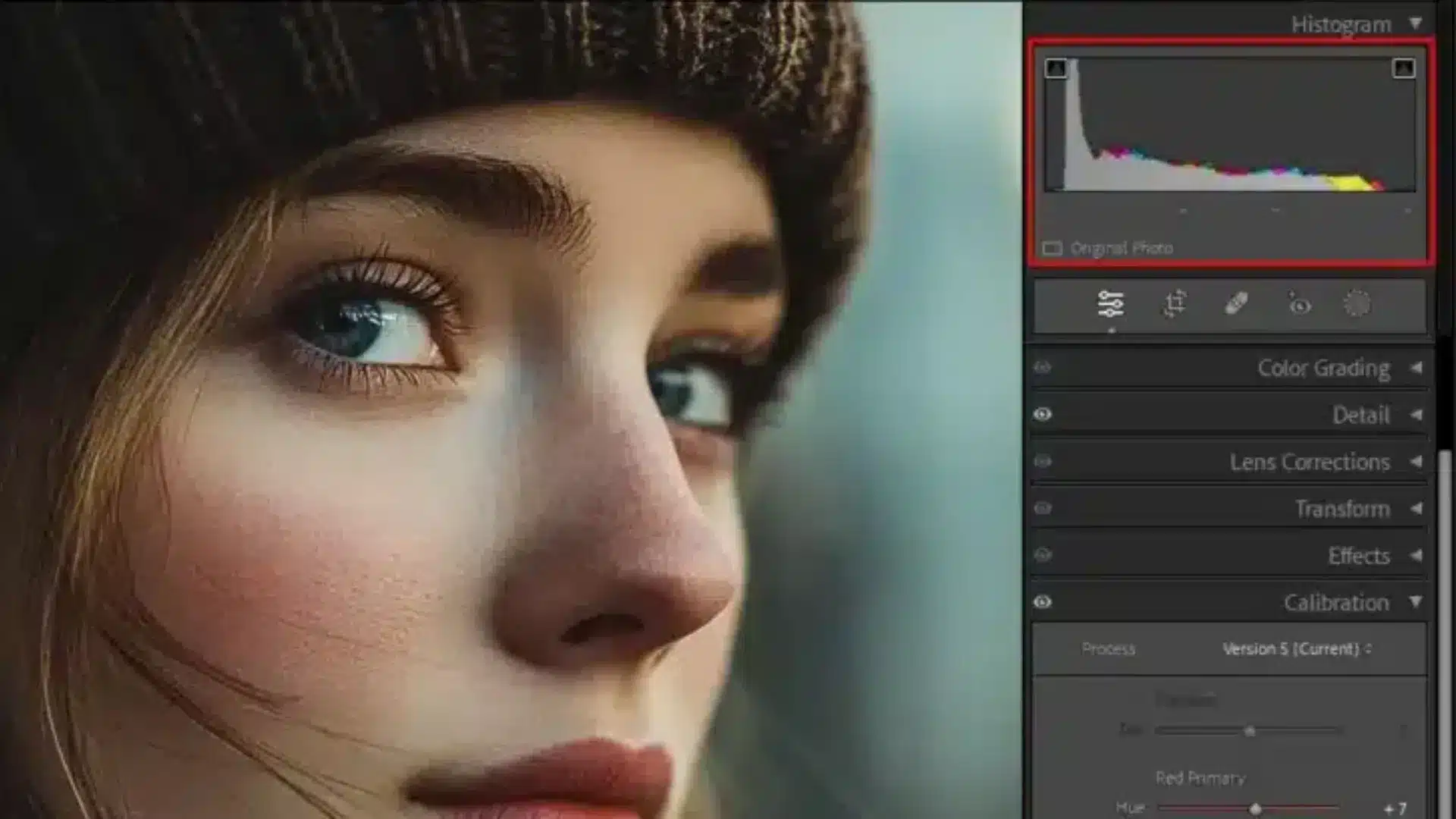
Transparency adjustments are critical for achieving a balanced and polished look in your images. Several essential tools in Lightroom to help you get the lightening just right:
- Matching Total Exposures: If you’re working with a series of photos shot in varying lighting conditions, use this feature. This tool allows you to synchronize the brightness across all selected pictures, ensuring consistency in your photo series.
- Histogram Editing: The Histogram in Lightroom refine photos is not just a visual guide; it’s also an interactive tool. You can directly manipulate the histogram to adjust the light, highlights, shadows, and other tonal values in your photo, providing a more intuitive editing experience in Lightroom.
- Select Sky: When working with outdoor scenes, the Select Sky tool helps you refine your sky exposure without affecting the rest of the photo, allowing for better contrast and lighting balance.
Practical Example: Refining a Natural Light Portrait
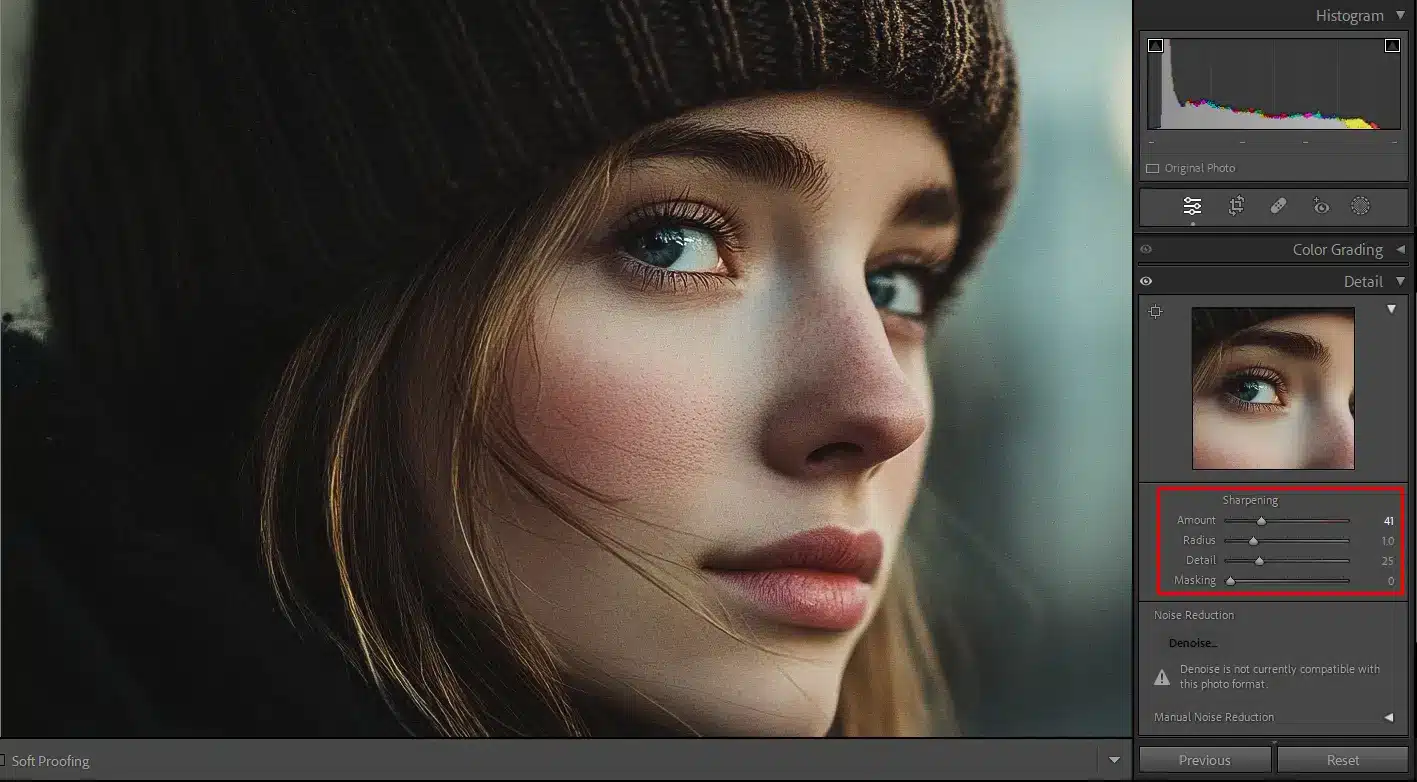
When editing a natural light portrait in Lightroom, aim to enhance the subject while keeping a natural feel. Begin with the Basic panel to adjust light and contrast, then use selective sharpening for key details like the eyes. Finally, refine skin tones and other colors with the HSL panel for a sharp, well-balanced portrait.
By mastering these Lightroom techniques, you can significantly refine photos, making them stand out with clarity, color, and balanced exposure. These refinements not only enhance the visual appeal of your images but also ensure they convey the intended mood and message effectively.
Step-by-Step Guide to Lightroom Refine Photos
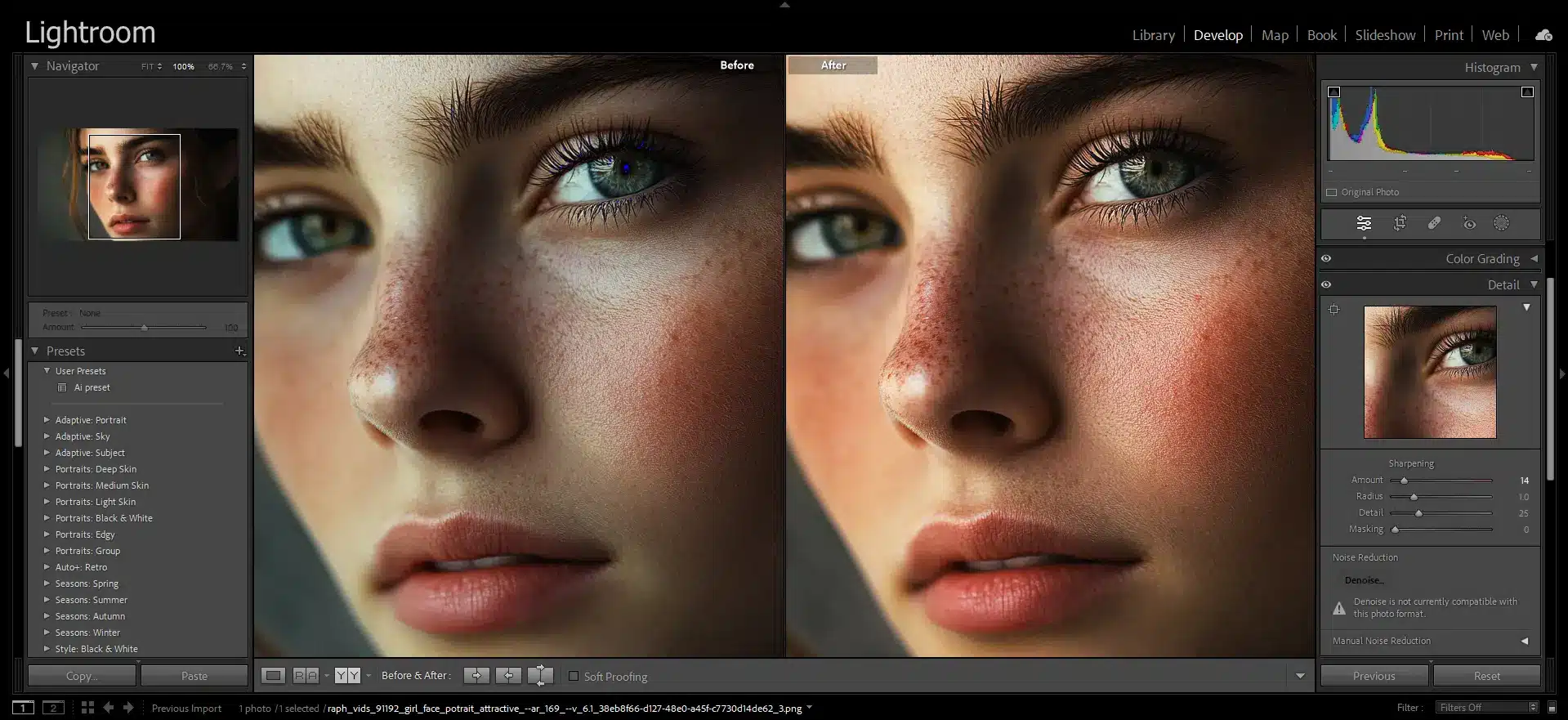
Refining photos in Adobe Lightroom is an art that requires a good understanding of the software’s tools and features. In this guide, we will walk you through the essential steps to convert your images effectively.
| Feature | Purpose | How to Adjust | Tips |
|---|---|---|---|
| Exposure | Adjusts the overall brightness of the image. | Use the Exposure slider in the Basic panel. | Start with Auto Adjustment for a balanced starting point. |
| Contrast | Enhances the difference between light and dark areas. | Increase or decrease the Contrast slider. | Avoid overdoing it to prevent unnatural looks. |
| Highlights | Controls the brightness of the lightest areas. | Lower to reduce brightness, increase to brighten. | Use alongside Shadows for balanced light control. |
| Shadows | Adjusts the brightness of the darkest areas. | Raise to reveal details in shadows, lower to darken. | Useful for bringing out hidden details in underexposed areas. |
| Whites and Blacks | Sets the white and black points of the image. | Adjust the Whites and Blacks sliders. | Helps in defining the dynamic range of your image. |
| White Balance | Corrects color temperature and tint for accurate colors. | Use the Temperature and Tint sliders. | Start with Auto White Balance and fine-tune as needed. |
Import and Organize Your Photos
- Importing: Connect your camera or SD card to your computer and use Lightroom's "Import" function to bring in your photos. Organize them into albums by event, location, or theme for easier management.
- Culling: Review and remove out-of-focus or poorly composed images before editing. This ensures you focus on photo only on the best shots.
Basic Exposure and Contrast Adjustments in Lightroom Refine Photos
- Revelation: Begin with the slider in the Basic panel. Adjust the overall brightness of your image by moving the slider left to darken or right to brighten the photo. Pay attention to the Histogram to avoid clipping the highlights or shadows, which can result in loss of aspects.
- Contrast: Increase the Contrast to make your photo pop by enhancing the difference between light and dark areas. Be cautious not to overdo it, as excessive contrast and control can create an unnatural look.
- Auto Adjustment: For a quick start, you can click the Auto button in the Basic panel. Adobe Photoshop Lightroom will automatically set visibility, contrast, highlights, and shadows based on its algorithm. This is a great way to see a balanced starting object, which you can fine-tune.
Fine-Tune Highlights, Shadows, Whites, and Blacks
- Highlights and Shadows: Use the Highlights slider to recover details from the brightest areas and the Shadows slider to bring out details in the darker areas. This step helps in balancing the light across the photo, making sure no masked area is too bright or too dark.
- Whites and Blacks: Adjust the Whites and Blacks sliders to set the pure white and black points in your photo. This helps in extending the dynamic range and giving your photo more depth.
Color Adjustments
- White Balance: Correct the color temperature using the White Balance tool. Adjust the Temperature slider towards blue for a cooler look or towards yellow for a warmer tone. You can also use the Tint slider to fine-tune the green and magenta balance.
- Vibrancies and Saturation: Boost the colors in your image using the Vibrancy and Saturation sliders. Vibrancy is a more subtle adjustment that enhances less-saturated colors without affecting skin tones, while Saturation increases the intensity of all colors in the image.
Detail Enhancement
- Sharpening: Enhance the details of your image using the Sharpening tool. Be careful to avoid over-sharpening, as it can introduce noise. Use the Masking slider (hold Alt/Option while adjusting) to apply sharpening only to the edges, keeping smoother areas like skin unaffected.
- Clarity and Texture: Use the Clarity slider to increase midtone contrast, which adds a punch to your image. The Texture slider can be used to soften fine details, making it particularly useful for portrait editing.
Apply Creative Effects
- Dehaze: If your image has a lot of haze, use the Dehaze slider to add contrast and clarity. This tool is especially useful for landscape photography, where atmospheric conditions might have softened the image.
- Vignette and Grain: Add a Vignette to darken the edges of your photo, drawing attention to the center. The Grain slider allows you to add a film-like texture, which can give your images a vintage feel.
Save and Export
- Export Settings: Once you’re satisfied with your edit, it's time to export your image. Choose the appropriate format (JPEG, TIFF, etc.), resolution, and quality settings depending on how you plan to use the image.
By following these steps, you can enhance your images with precision and creativity, ensuring they stand out whether viewed on screen or in print.
Common Questions about Lightroom Refine Photos

How do I clean up photos in Lightroom?
To clean up images in Lightroom Classic, use the Spot Removal tool to remove dust spots and blemishes. For larger issues, the Clone and Heal options can duplicate or blend imperfections. The Adjustment Brush also allows you to fine-tune by adjusting light, clarity, or softness.
What do refine photos do in Lightroom?
How do I make photos clear and crisp in Lightroom?
To make your photos clear and crisp in Lightroom for mobile, start by using the Sharpening tool. Increase the Amount slider to sharpen the picture, but use the Masking slider to limit sharpening to only the edges and high-contrast areas (hold down Alt/Option while adjusting). The Clarity slider can also help by enhancing midtone contrast, making textures pop. Finally, check your Noise Reduction settings to note that your photo remains clear without introducing grain.
How do I make my photos look better in Lightroom?
To make your photos look better in Lightroom box, follow these steps:
- Adjust brightness, contrast, highlights, and shadows to balance the overall light and dark areas.
- Use the Vibrancy and Saturation sliders to make colors pop without over saturating skin tones.
- Use the Sharpening tool for details and the Clarity slider to enhance textures.
- Apply selective settings and edit with the Adjustment Brush or Radial Filter to focus on specific areas of the picture.
- Add effects like vignette, grain, or dehaze to enhance the mood or style of the photo.
Conclusion: Lightroom Refine Photos
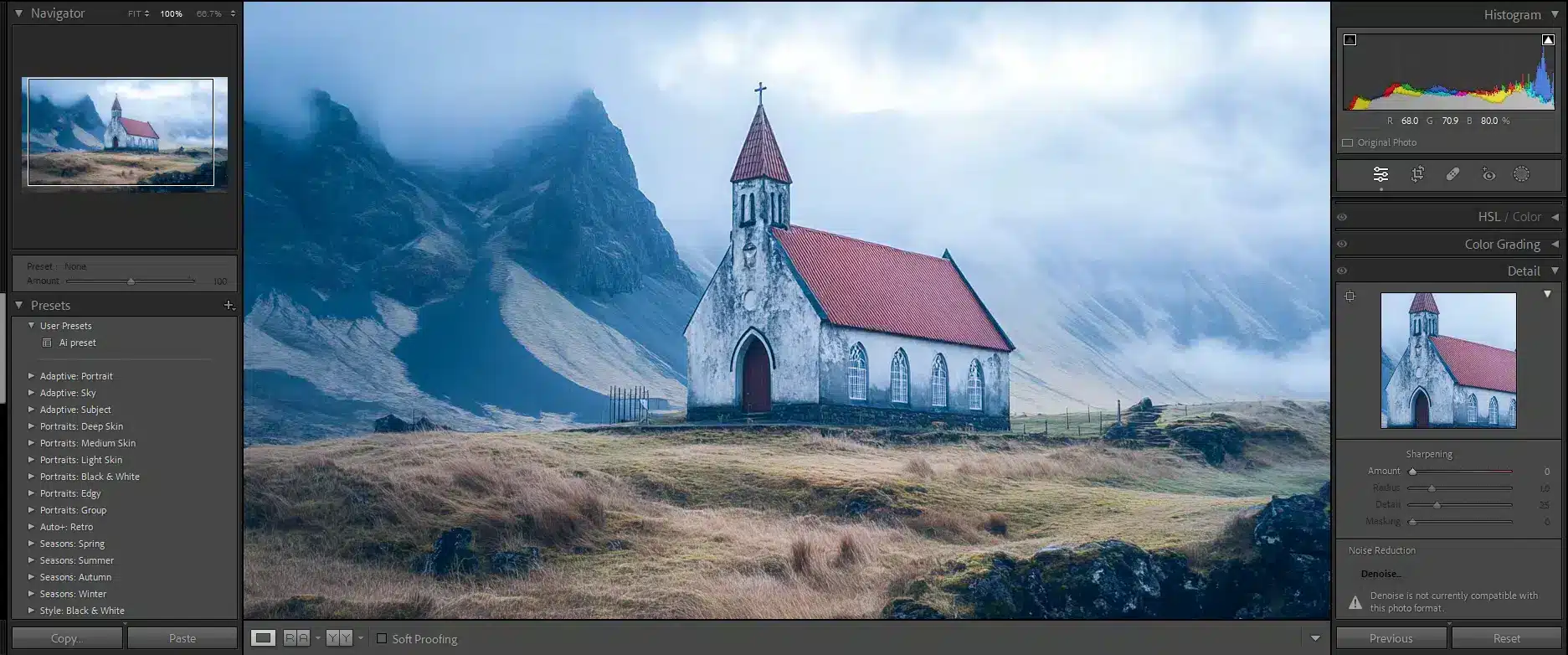
Mastering photo refinement in Lightroom classic has changed my photography approach. For example, a flat landscape shot from a mountain trip transformed into a vibrant snap with adjusted lightening, sharpened details, and increased vibrancy. Lightroom’s power is impressive.
To enhance your skills, check out our Lightroom Course and Photoshop course. Join today!
If Lightroom Refine Photos article has helped you, then Like and Share it with your friends
Have a nice photoshoot!
Read more about: Photo Editing with Lightroom and Photoshop















